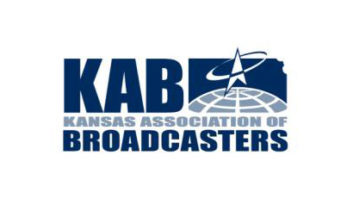WASHINGTON The companies developing emergency vehicle signaling services say they are moving forward – despite opposition from the NAB and SBE, and slowness on the part of the FCC to allow the companies to test the technology in this country.
Officials with Safety Cast Corp., Alert Devices International Corp. and AlertCast Communications LLC claim their devices would make roads safer by alerting motorists of approaching emergency vehicles. An Emergency Vehicle Signaling Service, or EVSS, involves the installation of low-power transmitters in public safety vehicles. The transmitter uses the AM and FM bands to transmit a warning directly to car radios that are already in use.
Because of the “jamming technique” used by EVSS equipment, broadcast groups oppose the proposed service, claiming it would interfere with local stations and potentially override Emergency Alert System messages (RW, Mar. 28, 2004).
Only one company has a request before the FCC for Special Temporary Authority to test its system.
Fall, summer tests
Safety Cast Corp. applied for the STA in early 2003 to test its EVSS technology in Jacksonville, Fla.
The FCC dismissed Safety Cast’s application “for our choice of frequency for our antenna field testing,” according to Robin Wilson, vice president of marketing for Safety Cast.
The company has asked the commission to review the decision and the application is still pending.
“The FCC is moving at its own pace, which is not a surprise. We are still optimistic and confident we have a product that is important to public safety. We are exploring all options right now,” said Wilson.
Another company developing this type of device, AdiCorp, petitioned the FCC in 2003 to make changes to Parts 2 and 90 of the rules to allow emergency vehicle warnings be transmitted over AM and FM broadcast signals. However, it filed a motion in late March to “suspend, or in the alternative, dismiss without prejudice” its Petition for Rulemaking, “in order to permit ADiCorp to perform tests of its Emergency Vehicle Signaling Service technology.”
ADiCorp hired an engineering firm to begin tests on its Radio Alert Transmitter unit in Canada this summer. Testing was expected to continue into the fall. The company expected to re-file its petition and submit its test results with the FCC by early November.
“We should be able to answer about 95 percent of the NAB’s interference concerns by then. We spent the past six months redesigning the product. I think (NAB) will be pleased with the changes,” said Tom Macone, president of ADiCorp’s emergency alerting division.
Macone said the redesigned unit scans consistently for EAS messages to avoid inadvertently covering them up and also addresses anti-theft issues.
Meanwhile, a third company, AlertCast International, says it is watching developments closely but has no plans to approach the FCC again. The commission in 2003 rejected AlertCast’s request for an experimental license to test its transmitter unit in Chico, Calif.
“We believe these services should be allowed right now under current FCC rules. There are so many rules that contradict each other … it’s very confusing,” said Howard Katano, president of AlertCast International.
Power levels adjusted
AlertCast’s limited testing, Katano said, indicated a number of variances and requirements needed to develop a successful emergency vehicle signaling product.
“Power levels will depend on terrain, buildings and even atmospheric conditions. We have to figure out how much power would be needed to override a signal within a certain distance of its antenna. That is why we need the FCC to allow us to do further testing,” Katano said. He added the transmissions are sent via a signal that reaches 360 degrees around a public safety vehicle and could reach up to 1,000 feet.
All three companies say their services will interrupt radio broadcasts and affect both mobile receivers and fixed radios in residences or businesses. “It’s a power issue. Our system can attenuate power and adjust it as it moves to allow for lower power levels in dense residential areas,” Katano added.
ADiCorp has said power levels for its Radio Alert Transmitter would fluctuate between 15 and 45 milliwatts, depending on the speed of the emergency vehicle.
Katano said AlertCast’s mobile transmitter includes software programmed with a GPS, “which allows our transmitter to attenuate power based on the proximity to each radio stations’ antennas,” Katano said.
The Society of Broadcast Engineers and NAB filed comments on ADiCorp’s Petition for Rulemaking this spring voicing concern with how EVSS works. Both groups believe the service would set a dangerous precedent and further damage spectrum integrity.
The NAB noted in its comments on ADiCorp’s petition that the FCC set aside 5.9 GHz for Dedicated Short-Range Communications in the Intelligent Transportation System in February and that authorizing another service for motor vehicle notification would be redundant.
Kelly Williams, senior director of engineering and technology policy for NAB, said, “We are concerned with the potential for this technology to cause interference and want to see some test data before we go any further.”
Public safety agencies had filed the vast majority of favorable comments to ADiCorp’s request for rulemaking to implement EVSS before the company withdrew the petition, according to the FCC.












